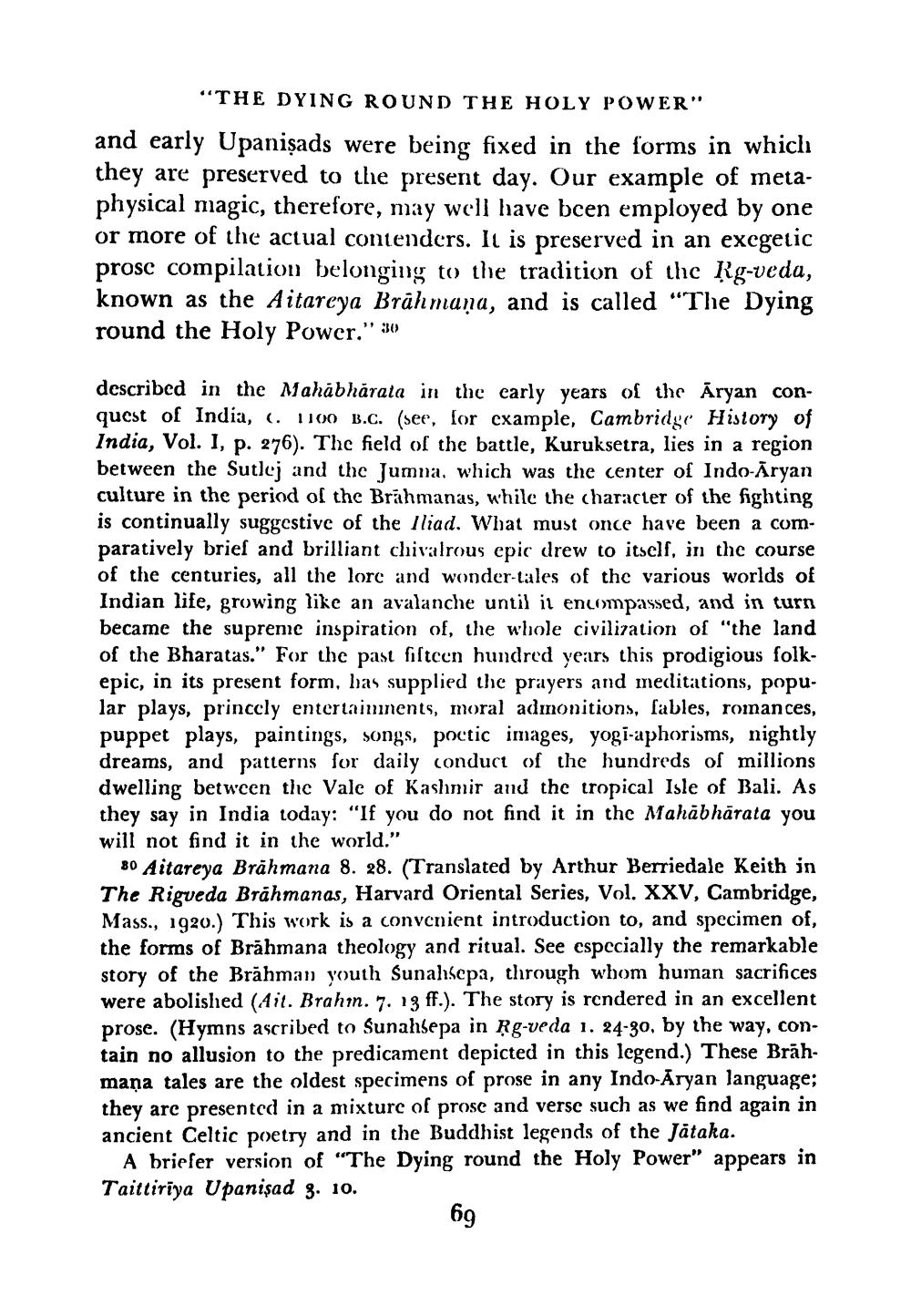________________
"THE DYING ROUND THE HOLY POWER"
and early Upanisads were being fixed in the forms in which they are preserved to the present day. Our example of metaphysical magic, therefore, may well have been employed by one or more of the actual contenders. It is preserved in an exegetic prose compilation belonging to the tradition of the Rg-veda, known as the Aitareya Brahmana, and is called "The Dying round the Holy Power." 30
described in the Mahabharata in the early years of the Aryan conquest of India, c. 1100 B.C. (see, for example, Cambridge History of India, Vol. I, p. 276). The field of the battle, Kuruksetra, lies in a region between the Sutlej and the Jumna, which was the center of Indo-Aryan culture in the period of the Brahmanas, while the character of the fighting is continually suggestive of the Iliad. What must once have been a comparatively brief and brilliant chivalrous epic drew to itself, in the course of the centuries, all the lore and wonder-tales of the various worlds of Indian life, growing like an avalanche until it encompassed, and in turn became the supreme inspiration of, the whole civilization of "the land of the Bharatas." For the past fifteen hundred years this prodigious folkepic, in its present form, has supplied the prayers and meditations, popular plays, princely entertainments, moral admonitions, fables, romances, puppet plays, paintings, songs, poetic images, yogi-aphorisms, nightly dreams, and patterns for daily conduct of the hundreds of millions dwelling between the Vale of Kashmir and the tropical Isle of Bali. As they say in India today: "If you do not find it in the Mahabharata you will not find it in the world."
80 Aitareya Brahmana 8. 28. (Translated by Arthur Berriedale Keith in The Rigveda Brahmanas, Harvard Oriental Series, Vol. XXV, Cambridge, Mass., 1920.) This work is a convenient introduction to, and specimen of, the forms of Brahmana theology and ritual. See especially the remarkable story of the Brahman youth Sunahsepa, through whom human sacrifices were abolished (Ait. Brahm. 7. 13 ff.). The story is rendered in an excellent prose. (Hymns ascribed to Sunahsepa in Ṛg-veda 1. 24-30, by the way, contain no allusion to the predicament depicted in this legend.) These Brahmana tales are the oldest specimens of prose in any Indo-Aryan language; they are presented in a mixture of prose and verse such as we find again in ancient Celtic poetry and in the Buddhist legends of the Jātaka.
A briefer version of "The Dying round the Holy Power" appears in Taittiriya Upanisad 3. 10.
69




